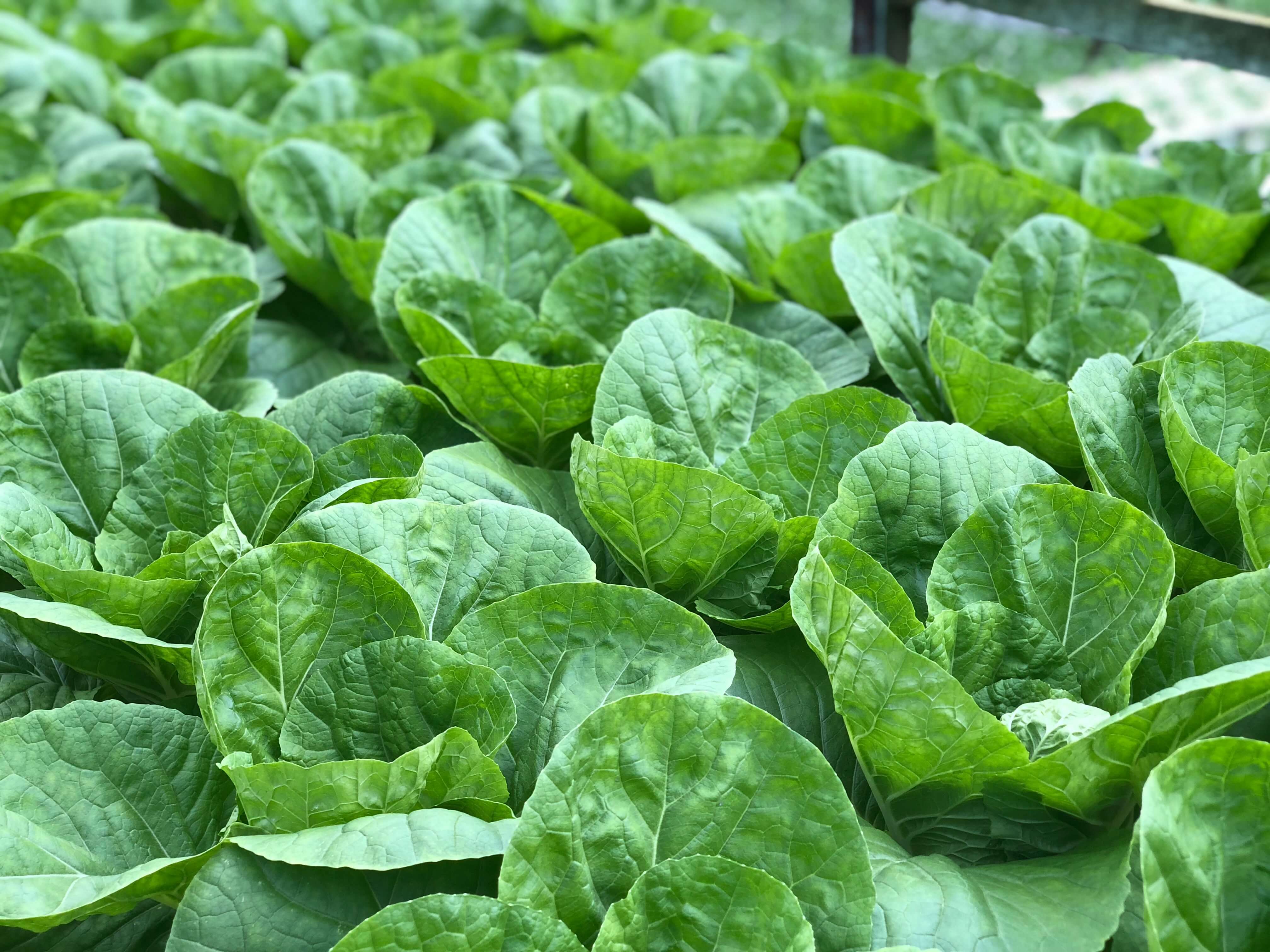Blue and Far-Red Light Affect Vegetative Growth and Pigmentation in Lettuce
Introduction:
The objectives of the study were to understand how light composition of blue and far-red spectrums affect vegetative growth and pigment synthesis in lettuce plants. Previous research has shown that blue light can enhance pigment levels of plants but decrease growth and that adding far-red light can help with photosynthesis. These researchers wanted to see if combining high-energy blue light with low-energy far-red light increased both vegetative growth and pigment levels. They specifically wanted to try to enhance pigments with nutrition value like beta-carotene and anthocyanins.Set Up:
The researchers grew romaine lettuce due to its green foliage (meaning it contains low level of anthocyanins) and low crop yield. Light treatments started immediately after germination and 10 days after, seedlings were transplanted into square pots in a vertical growing system. Plants were harvested after 31 days from transplanting. The experiment used customized LED fixtures with separate circuits for blue (450 ± 18 nm), red (660 ± 19 nm), and far-red (730 ± 30 nm) LEDs. Each light fixture comprised of five individual bars (60 cm long), each containing six LEDs of a given wavelength. Plants were grown under three light treatments with different spectral composition and similar light intensity. Light treatments comprised of different percentages red: blue: far-red light in the total light including 90: 10: 0 (“High-R”), 50: 50: 0 (“High-B”), and 42: 42: 16 (“High-B+FR”). Air temperature (°C) was calculated using Apogee ST-100 thermistors, and an Apogee SS-110 spectroradiometer measured total incident light intensity and spectral composition. The experiment was run two time, with photosynthesis being measured first and pigments were measured second.Results:
The plants under high-blue lights had reduced levels of canopy and leaf photosynthesis, which reduced the growth of the lettuce. In the high-blue and far-red combination, there was no improvement in photosynthesis, but resulted in reduced numbers of leaves per each plant. However, the leaves that did grow were much larger. As individual leaf area became smaller (e.g., High-B) or larger (e.g., High-B+FR), the levels of pigments including chlorophylls and beta-carotene increased or decreased, respectively.Conclusion:
The results from this study indicate that high-energy blue and low-energy far-red light affect the number and expansion of individual leaves differently, thereby influencing both vegetative growth and pigment synthesis in lettuce.
Image 2. Photo by Petr Magera; Plants growing under blue and red lights
Application Summary

Image 1. Photo by Soo Ann Woon; Rows of lettuce
Summary
Apogee temperature sensors and a field spectroradiometer were used to study the effects of blue and far-red photons on lettuce growth and pigmentation.
Apogee Sensors Used
Organization
Department of Horticulture and Landscape Architecture, Purdue University
Location
West Lafayette, Indiana, USA
Authors
- Yuyao Kong
- Krishna Nemali
Reference Article
